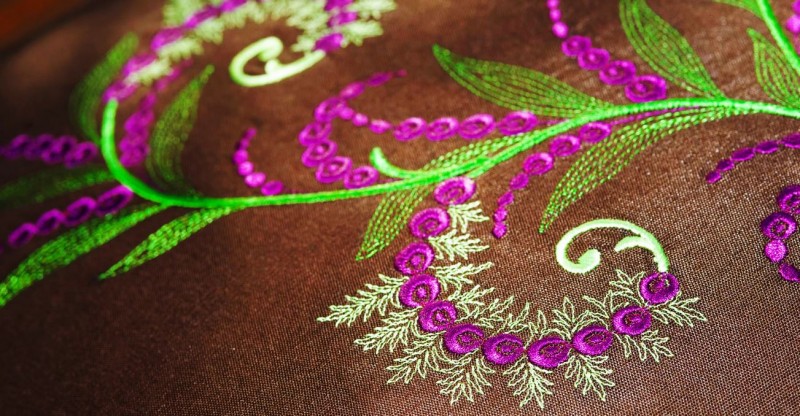
Embroidery is an age-old art form that involves decorating fabric or other materials with needle and thread. It is a craft that requires precision, creativity, and patience. The art of creating intricate embroidery designs is a mesmerizing process that allows artists to express their creativity and produce stunning works of art. In this article, we will explore the world of intricate embroidery designs, from the techniques used to the inspiration behind the creations.
1. Introduction
Embroidery has been practiced for centuries, dating back to ancient civilizations. It has evolved over time, with various styles and techniques emerging across different cultures. The art of creating intricate embroidery designs showcases the skill and creativity of artisans who dedicate countless hours to perfecting their craft.
2. History of Embroidery
Embroidery has a rich history that spans across continents. It was first used for practical purposes, such as repairing clothing and creating durable textiles. Over time, it evolved into a form of artistic expression, with intricate designs adorning garments, accessories, and even tapestries.
3. Materials and Tools
To create intricate embroidery designs, artists require certain materials and tools. These include various types of threads, needles, embroidery hoops, fabric, and embroidery patterns. The choice of materials and tools depends on the desired effect and the artist's personal preferences.
4. Embroidery Techniques
There are numerous embroidery techniques used to create intricate designs. Some common techniques include satin stitch, French knot, stem stitch, and cross-stitch. Each technique has its own unique characteristics and is suited for different design elements.
5. Design Inspiration
Embroidery artists draw inspiration from a variety of sources. Nature, architecture, cultural motifs, and personal experiences can all influence the design process. The intricate patterns found in traditional embroidery from different cultures often serve as a rich source of inspiration.
6. Popular Embroidery Styles
Embroidery styles vary greatly across different regions and time periods. Some popular styles include traditional folk embroidery, contemporary embroidery, goldwork embroidery, and bead embroidery. Each style has its own distinct characteristics and techniques.
7. Embroidery as a Fashion Statement
Embroidery has always been a part of the fashion industry. From haute couture to ready-to-wear collections, intricate embroidery designs add a touch of elegance and individuality to garments. Embroidered dresses, jackets, and accessories are often sought after by fashion enthusiasts.
8. Embroidery in Home Decor
Embroidery is not limited to fashion. It has also found its place in home decor. Intricately embroidered pillows, wall hangings, and table linens can transform a space and add a touch of craftsmanship and artistry to the surroundings.
9. Embroidery as a Therapeutic Art
Embroidery is not just a creative outlet; it can also be a therapeutic activity. The repetitive motion of stitching can have a calming effect on the mind, promoting relaxation and mindfulness. Many people find embroidery to be a form of stress relief and a way to express their emotions.
10. Embroidery in Different Cultures
Embroidery is a universal art form, with each culture adding its unique touch to the craft. From Indian mirror work to Chinese silk embroidery, different cultures have their own distinct embroidery traditions that reflect their history, values, and aesthetics.
11. Preserving and Displaying Embroidery
Preserving and displaying intricate embroidery designs is essential to ensure their longevity. Proper storage techniques, framing, and conservation practices can help protect the artwork from damage and deterioration. Museums and galleries play a crucial role in showcasing embroidered masterpieces to the public.
12. Embroidery in the Digital Age
With advancements in technology, embroidery has embraced the digital age. Computerized embroidery machines can replicate intricate designs with precision and speed. Digital embroidery patterns and software have made it easier for artists to create complex designs and experiment with new techniques.
13. Tips for Creating Intricate Embroidery Designs
Creating intricate embroidery designs requires skill and attention to detail. Here are some tips to help you enhance your embroidery skills:
Start with simpler designs and gradually progress to more complex ones.
Practice different stitches to master their execution and create diverse textures.
Experiment with different color combinations to create visually appealing designs.
Take breaks and rest your eyes to prevent strain and fatigue.
Join embroidery communities and workshops to learn from experienced artists and share your work.
14. Conclusion
The art of creating intricate embroidery designs is a testament to human creativity and craftsmanship. From ancient civilizations to the modern era, embroidery has stood the test of time and continues to captivate people with its beauty and intricacy. Whether it's in fashion, home decor, or personal expression, embroidery has a place in our lives as a form of art and self-expression.
Unveiling the Hidden Gems: Exploring the Best Street Shopping in Mumbai
Try this homemade strawberry scrub to keep your skin glowing during the monsoon season